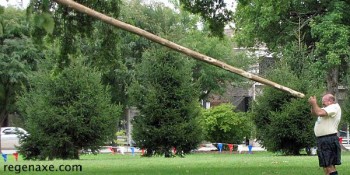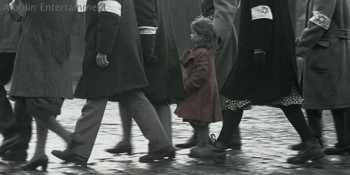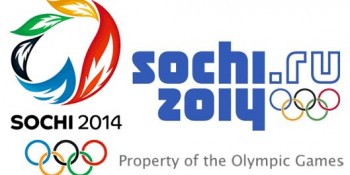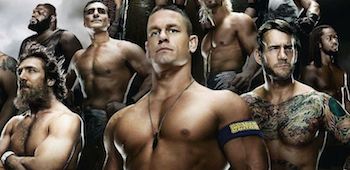After five months of terrible booking, we’ve finally reached that special time of year when WWE is bearable to watch. And perhaps no WWE show is more bearable than the Royal Rumble.
This year’s show is headlined by a WWE Super-Duper Extra Special Heavyweight Championship match between Randy “Bland White Guy” Orton and John “Bland White Guy” Cena in a “We Ran Out of Stipulations” match that’s sure to be as compelling as a Maven promo.
But we all know the real main event is the eponymous Royal Rumble match. Thirty wrestlers enter, only one can win. Unless it’s 1994.
This year’s Rumble match is expected to be an exciting one. Unlike previous years, there is no obvious winner, though there are some heavy favorites. So let’s take a look at the top contenders to win big this year, forecast where the win could take them, and argue what would be best for our entertainment.
Batista
Chances of Winning: Very High
Returning just in time for the Royal Rumble seems incredibly lucky, and definitely tilts the betting odds in The Animal’s favor. However, being announced ahead of time removes the virtual guarantee of victory that a surprise number 30 return holds.
Batista’s homecoming allows a plethora of interesting story lines going forward. Does The Animal take on the Beast, Brock Lesnar, at WrestleMania XXX? Or does Big Dave aim to be the new “face of the company,” either challenging Randy Orton, or turning heel and joining The Authority to replace The Viper? Any of these options allows for Batista to win the battle royal and move on to WrestleMania.
The most likely outcome from my perspective is a one-on-one dream match with Lesnar. Despite Lesnar’s claims to the number one contendership, I don’t think this match needs the WWE Championship on the line, and it would be stupid to take the belt away from a full-time star who has worked the entire year. Then again, The Rock was WWE Champion last year, so fairness is clearly not a factor in booking WrestleMania.
Equally as likely, in keeping with the unfair nature of WWE booking, would be Batista winning the Rumble and putting Orton away in the main event of WrestleMania, proving that WWE’s long-term booking plans were never about getting anyone new over.
My hope would be for The Animal to join The Authority, replacing Orton after his failure to defeat Cena, opening the door for a WrestleMania main event of D.B. vs D.B.: WWE Champion Batista vs Royal Rumble winner Daniel Bryan.
Possible WrestleMania Opponents: Brock Lesnar (most likely), Randy Orton, Daniel Bryan
Bray Wyatt
Chances of Winning: Lowest
Bray Wyatt is perhaps the largest outside shot in this list, but he could be the Franklin Pierce of the 2014 Rumble. (Franklin Pierce was never expected to be a presidential candidate, but he earned the Democratic nomination when the party could not agree on anyone else. He then proceeded to become the 14th President of the United States.) Wyatt, who models himself as this dimension’s Galactus, has certainly devoured the world of our expectations. It’s said that Wyatt is a personal favorite of Vince McMahon, which means good things for our friendly neighborhood cult leader.
Unfortunately for older fans, the most likely opponent for Wyatt in such a scenario is The Champ himself, John Cena. Cena vs. Wyatt could undoubtedly make for an entertaining story line heading into the Show of Shows, so this is another matchup that should not be about the WWE Championship. Bray’s creepy antics and violent tendencies would make for a great foil to pro wrestling’s Superman, and there’s no doubt the match could be an interesting watch.
This seems to be a pretty strong idea for a match at WrestleMania, but again, it doesn’t need a WWE Championship attached to it to make the match compelling.
Possible WrestleMania Opponents: John Cena, Daniel Bryan, the Shield
CM Punk
Chances of Winning: High
Even entering the Rumble match at number one, CM Punk has a higher chance than most to win, but it still seems unlikely. The Straight Edge Savior’s WrestleMania spot seems set in stone: a clash with Triple H for which the foundation is already being laid. However, if the last year is any indication, feuding with The Game does not mean you will ever actually wrestle him. Alternately, Punk could be building toward a one-on-one with Randy Orton in the main event.
Punk is long overdue for the final slot on the WrestleMania card. Shafted in that respect by WWE booking for two years in a row, the Second City Saint spent 434 days as WWE Champion without getting to defend his title in the final match of the Show of Shows. To put that in perspective, The Miz, King Kong Bundy, and Bam Bam Bigelow all closed out WrestleMania at some point in their careers.
Despite this obvious injustice, WWE appears intent on booking Triple H vs. CM Punk in what should be a very colorful feud — as long as Punk is allowed to let loose. This means Punk is likely to get knocked out of the Rumble match through less-than-clean circumstances. That will allow him to move forward with the anti-authority story line that promises to birth some very good promos, at least from Punk (with Triple H only pretending he’s on the Best in the World’s level).
In the best possible scenario, CM Punk wins the WWE title in the Elimination Chamber and faces Daniel Bryan in the single greatest WrestleMania main event ever. That, however, is the craziest of dreams.
Possible WrestleMania Opponents: Triple H, Randy Orton
Roman Reigns
Chances of Winning: Low
Another outside shot whose chances in the Rumble are dependent on Vince McMahon’s whims. Remember in the early days of the ECW “brand” when Paul Heyman wanted to build his show around CM Punk, and Vince said: No, the future is in Bobby Lashley? Clearly, Vince knows his stuff. Anyway, Lashley was nowhere near ready, while Punk was already blazing trails and getting over based on in-ring performance alone. So, as expected, Vince went with the bland meathead.
Roman Reigns is no Lashley. Reigns is great. Reigns has potential. Roman Reigns, however, is perhaps the third most talented guy in The Shield. Being the third best in The Shield still makes you better than 90 percent of professional wrestlers, but it shouldn’t warrant a rushed push. Still, that’s obviously the direction WWE is deciding to go, leaving Rollins and Ambrose to either find a new partner or end the hottest gimmick WWE has introduced in a decade.
Rumor is that Roman Reigns’s push is expected to see him plow through the roster in the Royal Rumble. While the Diesel push could be fun to watch, he certainly shouldn’t win the match. The money match for The Shield is either in a six-man tag against the Wyatt’s (remember that pop when they got into a scrape?) or a triple threat among his fellow soon-to-be-former members of The Shield.
If Reigns does shock the world and win the match, his opponent at the big show should definitely be Randy Orton. A win at the Rumble would propel Reigns into stardom and certainly give him some solid babyface support. That kind of popularity, however, would be no match for John Cena’s, who only gets booed out of the building when he is facing much cooler wrestlers than Reigns — guys like Edge, Rob Van Dam, CM Punk, and Daniel Bryan.
Possible WrestleMania Opponents: Seth Rollins and Dean Ambrose, Randy Orton, John Cena, the Wyatt’s
Brock Lesnar
Chances of Winning: Low
As of now, the Beast isn’t even an entrant in the Royal Rumble, but that could simply be a swerve. Brock Lesnar as a surprise number 30 would blow the roof off the building, and the likely confrontation with Batista would immediately ignite a WrestleMania feud. Lesnar could eliminate The Animal and win the Rumble, with Batista taking the belt in the Chamber, setting up the epic clash of big men on the Grandest Stage of Them All.
Lesnar has long been rumored to be The Undertaker’s opponent for this installment of The Streak, but that seems to be losing favor with the fear that his rough style could hurt the aging Phenom. Another option for Lesnar at WrestleMania would be for him to win the title at Elimination Chamber, becoming The Authority’s new champion and a seemingly unbeatable force, to be conquered at WrestleMania by either his 2013 SummerSlam opponent, CM Punk, or the people’s choice, Daniel Bryan, either of which promises to be an awesome match.
The best decision may simply be to leave the Beast out of the Rumble match and book him against Batista (see above). Their clash should be about who is better and stronger, not about a championship that neither has held in years. And if Lesnar isn’t going to win, he shouldn’t be anywhere near the Rumble match.
Possible WrestleMania Opponents: Batista, The Undertaker, Daniel Bryan
Daniel Bryan
Chances of Winning: High
It’s very rare that the sentimental favorite for the Royal Rumble is considered an unlikely victor for the match. I list Bryan as highly likely to win because of the grassroots support for the man, and because it would be the best next step in Bryan Danielson’s long journey to being a legitimate WWE Champion. Despite this, WWE’s booking of Bryan has clearly been terrible, and it seems unlikely Vince is going to trust the man with the WrestleMania main event, despite his overwhelming popularity.
We all want Daniel Bryan to win this match. Even though I am a CM Punk fan first, I want Bryan to win the WWE Championship at WrestleMania. There is no better possible conclusion to the terrible Authority story line than Punk defeating Triple H, and Bryan finally obtaining the WWE Championship (again).
Unfortunately, the question of who his WrestleMania opponent would be is very tricky. WWE can’t possibly sell Orton vs. Bryan as the main event of another pay-per-view (is that word anachronistic now?), and while John Cena vs. Daniel Bryan II would be huge, it’s doubtful that anyone in WWE would allow Bryan to beat Cena twice. No one gets that kind of honor. Cena vs. Bryan also lacks the payoff for the god-awful Authority story line, unless — and this is highly unlikely and ill-advised — Cena turns heel and joins the McMahons.
Recent rumors have indicated Bryan is a possible challenger to The Streak this year. The chances of that pairing almost make all of the terrible booking of the past year acceptable. Is there any other man in or out of WWE who would give The Deadman such a good match? And with his never-say-die character, Bryan could get an amazing rub and look unbelievable in his inevitable defeat.
Daniel Bryan manages to be simultaneously the best choice and the least likely to win the Rumble match, which makes judging his odds difficult. I stand by my ranking of Bryan as highly likely to win, despite my better judgment saying it won’t happen.
Possible WrestleMania Opponents: The Undertaker, Randy Orton, John Cena, Batista, Brock Lesnar, Bray Wyatt
The Odds
Ultimately, Batista is the odds-on favorite to win the Rumble match. However, Daniel Bryan has forged an amazing connection with fans around the world who want to see him succeed more than anything. The question is whether or not Vince McMahon is willing to accept this fact and give the people what they want. Knowing the McMahon track record, this seems highly unlikely, but we can always hope.
After all, WWE thrives on hope. We hope for our heroes to vanquish the dragons and defeat their own demons. We hope the hard worker will get his time in the sun. We hope Triple H won’t cut a 30-minute promo, running down the entire roster. And we hope to see John Cena win against the monsters like Khali and lose to the workers like Bryan and Punk. We hope. And, every once in a while, WWE lets us believe.
Let’s hope Sunday, January 26, is one of those times.






